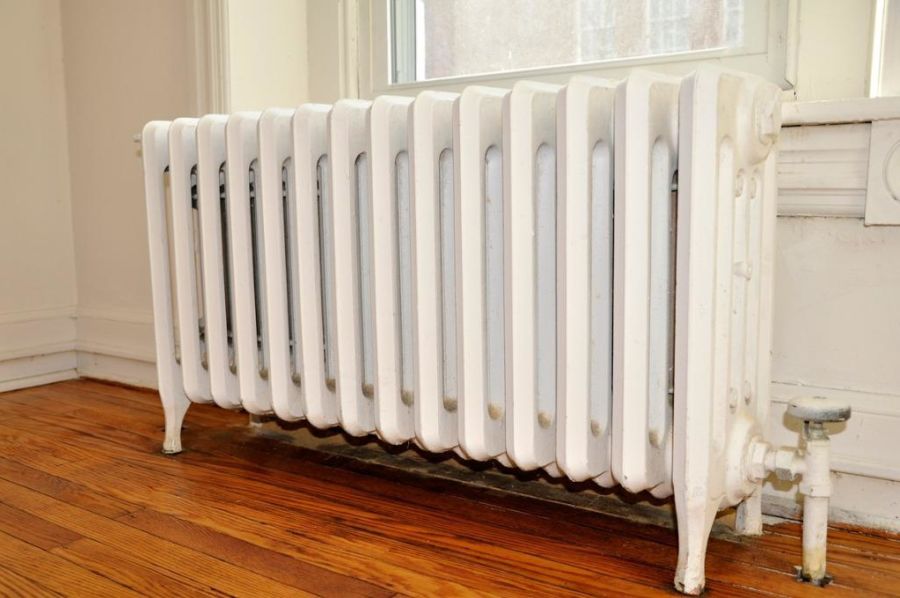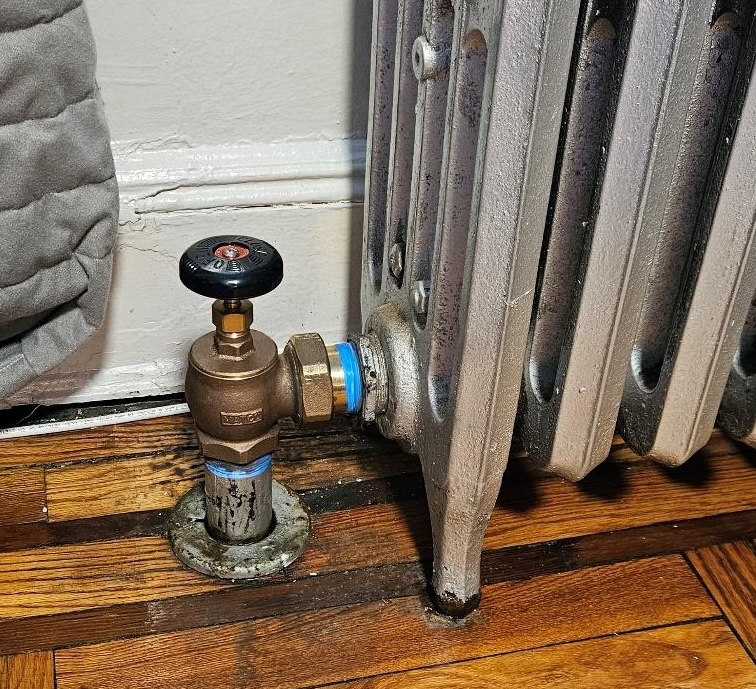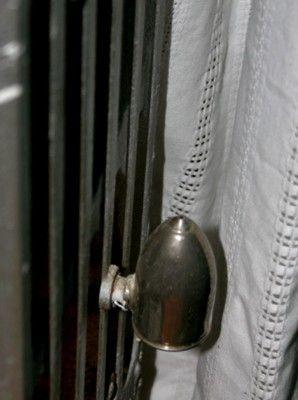How Do Radiator Valves Work?
February 06, 2024

Radiator valves vary depending on the type of heating system you have.
Radiators are the endpoint of your heating system. They receive hot water or steam from your boiler and radiate heat throughout your home. One of the most important components of a radiator is a device known as a radiator valve.
If you're experiencing radiator issues such as a lack of heat, or water/steam leaks, in many cases, a faulty or defective radiator valve may be the cause.
Understanding how radiator valves work can help ensure you're prepared to spot issues when they arise and know when to call for professional service. In this guide, we'll cover the following points so you can answer the question, "How do radiator valves work?"
- Quick Recap of How a Boiler Works
- Different Types of Radiator Valves
- Balancing and Maintenance (steam radiators)
Are you having trouble with your radiators?
If you’re having radiator issues in your home, don't hesitate to contact Ranshaw Plumbing & Heating to schedule an appointment with one of our seasoned heating specialists. With 60+ years of experience under our belts and a 4.8/5 Google rating, we're your go-to team for all your heating and plumbing needs.
Quick Recap of How a Boiler Works
The main objective of a boiler is to heat water or produce steam to raise the temperature of your home. First, heated water or steam travels through the radiator circuits. The hot water or steam then passes through the metal walls of the radiator tubes to circulate heat throughout the room. Once the steam or water has been cooled, it travels back to the boiler through water pipes known as return lines. This is a continuous cycle that serves to consistently heat your home.
Different Types of Radiator Valves
Radiator valves come in various forms. It's worth noting that not all valves operate in the same way. The process that radiator valves engage in to heat your home depends on the type of unit they belong to (steam or hydronic). We'll explore the different types of valves below.
Hot Water Radiators (Hydronic Heating)
Supply Valve (shut-off valve)

Radiators valves control the supply of steam or hot water from your boiler.
All radiators are comprised of a supply valve (also referred to as a control or shut-off valve). Radiator shut-off valves are located on the bottom of the unit, where water pipes feed into and exit the radiator.
The main function of the shut-off valve is to control the supply of hot water that enters and leaves the radiator. In simple terms, a radiator valve controls this flow of water to regulate the amount of heat that the radiator generates. A supply valve also makes it possible to isolate and repair/replace a leaking radiator without shutting water off to your entire home.
There are two main types of radiator shut-off valves: manual shut-off valves and thermostatic valves.
Manual shut-off valves are found in the majority of Queens homes. To permit hot water supplied from your boiler to pass through your radiator, the shut-off valve must be in the open position (turned counter-clockwise).
Thermostatic valves are designed with more advanced and intuitive technology. A thermostatic valve regulates the amount of heat that a radiator can produce by controlling the flow of hot water that enters and leaves the radiator. By monitoring the current temperature in any given room, they adjust the radiator's heat output accordingly. Once the room has been sufficiently heated, the valve closes to prevent overheating. Thermostatic valves also allow you to heat individual rooms as your needs change, giving you more control from room to room.
Bleeder Valve
Over time, air can develop inside a hot water radiator preventing heat from properly circulating. A secondary valve, known as a bleeder valve, can be manually opened using a radiator key. This will release the air trapped in your heating system that can block the flow of hot water into your radiators.
Steam Radiators
Steam radiators are comprised of a control valve and an air valve.
Supply Valve
A supply valve on a steam radiator is located at the bottom of the radiator and usually has a round knob/lever that is rotated to the right (clockwise) to close or rotated to the left (counter-clockwise) to open. Unlike a hot water system, a supply valve on a steam radiator cannot be partially open or closed to regulate the amount of heat the radiator generates. They must be either fully open or fully closed.

An air valve controls the flow of air & steam in a steam radiator.
Air Valve
The air valve (also referred to as a steam valve or air vent) adjusts the amount of air and steam going through the radiator. When the boiler is off, air fills up inside the radiator. During a heating cycle (when your thermostat calls for heat), steam makes its way up to your radiators, forcing the trapped air out through the air valve. The air valve is heat sensitive and will close, so once the air is released, the radiator can fill with steam and distribute heat.
Balancing and Maintenance
A crucial part of radiator maintenance in a steam system is ensuring your units are properly balanced. If some of the radiators in your home take longer to heat up than others, it's a good idea to have them balanced. This process entails increasing water flow to the colder radiators in your home while restricting flow to the hotter radiators. This helps prevent the warmer rooms from overheating while ensuring that the cooler rooms are sufficiently heated.
To keep your radiators running smoothly all season long, schedule an appointment with a boiler professional at least once a year. A trained boiler technician will watch for any leaks, cracks or an unbalance of heat in your system. The best time to do this is right before the start of the heating season so any issues can be addressed before the cold weather arrives. Now that you have an answer to the question, "How do radiator valves work?" you can confidently call for service and stay ahead of any potential radiator issues.
Ready to give your boiler and heating system a much-needed checkup?
Visit our site to schedule boiler maintenance service today. Our honest, upfront prices and dependable quality have earned us the trust of countless homeowners like you.
